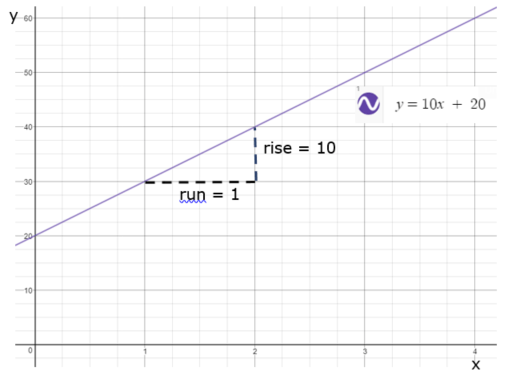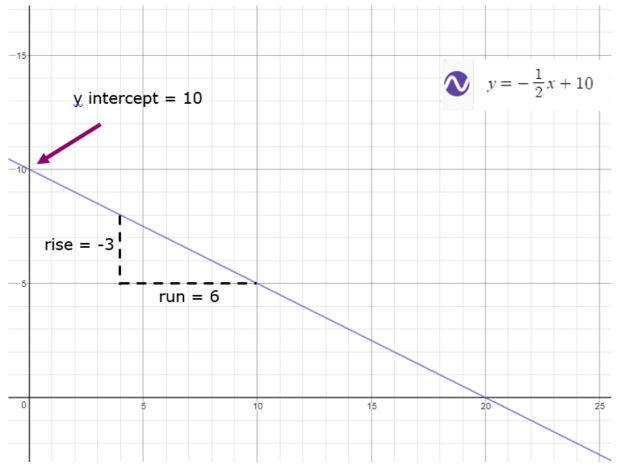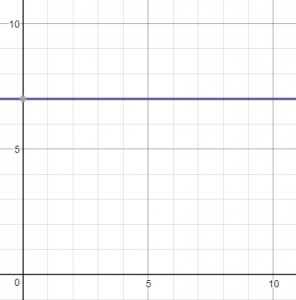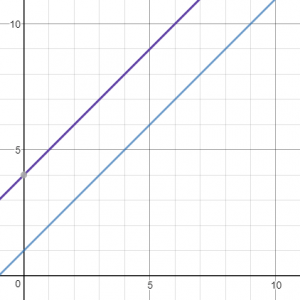Equations and graphs
Consider this table of values of and
.
| 0 | 20 |
| 1 | 30 |
| 2 | 40 |
| 3 | 50 |

Notice that for every increase of in the
the
increases by
. This constant difference shows that there is a linear relationship between
and
. If we plot the values on the axes we get the straight line in the graph above.
Gradient
The gradient of the line is . The gradient of any line can be calculated using the formula rise over run (either by reading off the graph or using any two coordinates from the table).
e.g. Point 1:
and Point 2:
Straight line equations
The general form of a straight line is
Where is the gradient of the line and
is the
intercept (i.e. where the line crosses the
axis).
This form is handy for sketching a line and for reading off the gradient.
e.g. Sketch the line
The
and the

Note that sometimes we need to rearrange an equation into the form .
e.g. Find the gradient and y intercept of the line
|
|
|
|
The line will cut the axis at
with a gradient of
.
Use the desmos online calculator to draw different straight lines to understand the relationship between the equation and the graph.
Special graphs
Horizontal lines
Line:
Gradient = 0

Vertical Lines
Line:
Gradient = undefined

Parallel Lines
Lines: and

The gradient of parallel lines are equal.
Tables and graphs drag and drop activity
Complete the following interactive activity
Further information
- Press the Printer Friendly button at the top left-hand corner to download a printable handout
- Khan academy uses video to explain another worked example of drawing a line with slope and intercept and a set of practice problems that you can use to review your understanding.

